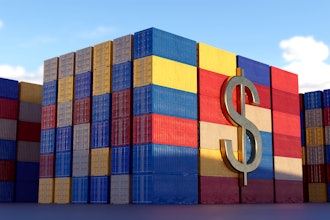While this past winter was fairly mild compared to the winter of 2015 — which began with New York officials shutting down a 132-mile stretch of the New York Thruway due to freezing and snow falling as fast as six inches an hour — supply chain managers still need to be prepared to handle extreme weather. No matter what time of year, there is always the potential for weather to wreak havoc on shipment plans. In fact, this year’s warmer winter weather meant heavier rainfalls and higher wind speeds, which caused power and internet outages, trees and branches falling and blocking roadways, and higher seas and turbulent waters.
This has the potential to impact all modes of transportation, but businesses still need to get their shipments to where they are going. This article examines steps logistics managers can take to make it through any season of extreme weather.
Use Increased Visibility to Your Advantage
One of the best ways to prepare for extreme weather is by having visibility into every aspect of the supply chain. One of the best ways to accomplish this is with a transportation management system (TMS), which can offer key insights into every step of the transportation process. A TMS can help supply chain managers plan accordingly to optimize transportation and, if needed, course correct to avoid obstacles like roads that are blocked off by fallen trees or washed out from flooding.
During inclement weather, TMS solutions are especially important to have in place because they empower the right people to have the right insights into the status of transportation and shipping – for instance, what specific vehicle a package is on and what route that vehicle is taking to the delivery. With a TMS, supply chain managers are able to see if there is a better route or, if there is a storm coming, if they are able to shift the goods onto a different vehicle, like a freight train or plane, to avoid weather-related delays. Not only does this ensure goods are delivered on time, but it also means that perishable or fragile items are delivered with no damage.
A Strong Carrier Network = Flexible Shipping Options
Having access to a broad carrier network is crucial to making sure shipments can navigate through extreme weather. And having access to a variety of transportation alternatives — even ones your company might not normally use — provides flexible options for delivery.
For example, if the shipping company you normally use is unable to make deliveries due to unsafe driving conditions or unexpected road closures, a strong carrier network allows you to quickly choose another truck, carrier or even mode of transport. This eliminates the last minute scramble to find alternative options (and the subsequent last minute fees) and also ensures that the goods are delivered safely and on time.
Drop Shipping to Streamline the Process
A drop shipping approach helps to get shipments to the end customer, even in extreme weather. This is because it removes one of the key steps in the supply chain – fulfilling the order and then having it shipped from your warehouse. With drop shipping, the order is sent directly to the manufacturer or your supplier, who then ships the product directly to the customer.
In extreme weather, shortening the supply chain is vital to delivering a positive customer experience. Drop shipping streamlines the normal buyer/seller process and minimizes the possibility of a breakdown in the supply chain because of poor weather conditions. Drop shipping is also cost effective because it minimizes the need to maintain expensive warehouse space (and accompanying staffing levels) because there is no need to stockpile goods. It also makes it easier for companies to be agile in the face of unseasonable weather fluctuations – if you have a dry spring, for instance, you don’t have to worry about a bunch of unsold umbrellas taking up space in your warehouse or being blown out the door at a loss.
Supply chain managers are only able to control their reaction to how they respond to weather-related challenges. They can be ready for anything that Mother Nature throws their way with increased visibility, TMS solutions and a broad carrier network.
Jim Hoefflin is president and COO of Kewill, bringing over 25 years of experience in articulating strategy, developing industry solutions and creating positive change to grow a business. Prior to Kewill, Jim served as CEO and president of Empower Software Solutions, Inc., where he led the company to create a dual go-to-market strategy to address both the enterprise and SMB segments.























